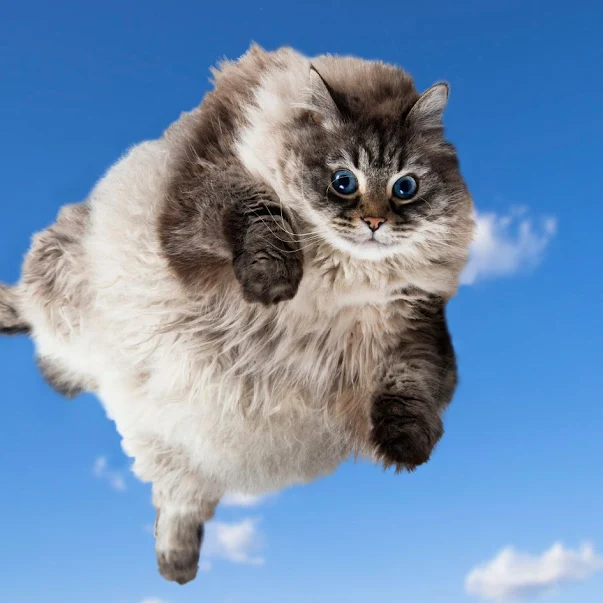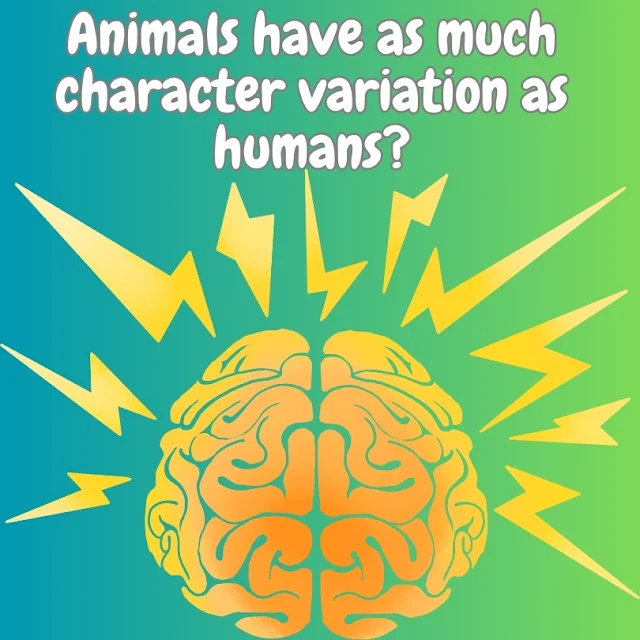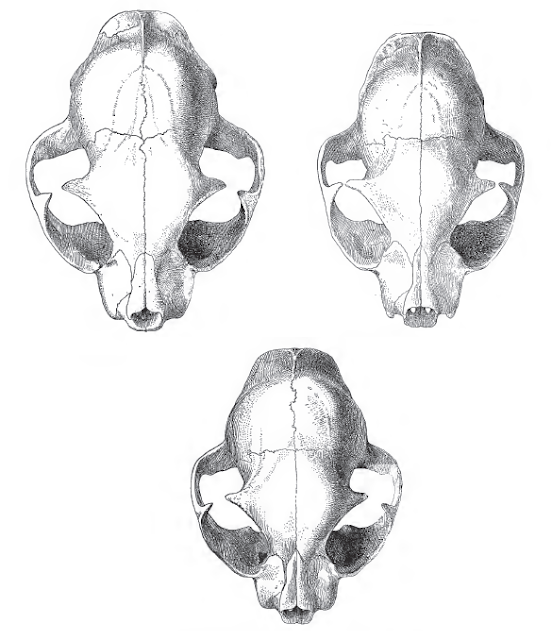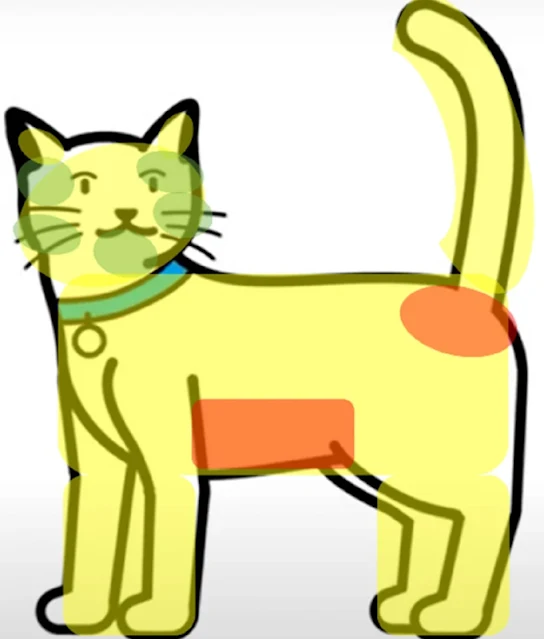Thursday, 3 October 2024
Thunderstorms create an electric field stronger than 100 million AA batteries
Thursday, 1 August 2024
Scientists want frozen samples of animal species stored on the moon (infographic)
Thursday, 9 May 2024
Ginger toms are friendlier and more confident that other domestic cats
 |
| Confident and friendly ginger tom cat at a supermarket. |
"To be a ginger cat, a female kitten has to inherit two copies of the ginger gene, but males only have to inherit one. Measurements have also shown that generally male ginger toms are heavier than most cats of other colours. Male ginger cats tend to be both taller and broader than most other moggies - apart from the North American Maine Coon."
Ginger cats, also known as orange or marmalade cats, are indeed quite special! Their striking appearance and unique coloration make them stand out, but it’s their temperament that truly captivates cat lovers. Let’s explore why ginger cats are often described as friendly, sociable, and outgoing:
- Friendly and Affectionate Nature: Ginger cats are known for their friendly and affectionate behaviour. They thrive on companionship and love engaging in playtime and interactions with their human counterparts. If you’re looking for a feline companion who enjoys cuddles and attention, a ginger cat might be a great choice!
Sociability: These cats tend to be more social than some other coat types. They often seek out human attention and enjoy being part of family activities. Their outgoing nature makes them wonderful companions for households with children or other pets.
Independence with a Dash of Charm: Beneath their sociable exterior, ginger cats also have a streak of independence. They strike a balance between seeking affection and having their own space. Their playful and curious personalities add to their charm, making them delightful pets.
Remember that individual personality and temperament can vary among cats, regardless of coat colour. While ginger cats generally exhibit these positive traits, there are always exceptions. If you’re considering adopting a ginger cat, spend time getting to know the specific cat’s personality to ensure a good match for your home and lifestyle! 😺🧡.
Thursday, 25 April 2024
Why humans don't have tails. Genetic basis for our tail-loss evolution.
 |
| Human with a tail in X-ray. Image by DALLE. |
"It has long been speculated that tail loss in hominoids contributed to orthograde and bipedal locomotion, the evolutionary occurrence of which coincided with the loss of the tail" - quote from the study - see citation at base of page.
The reason
Study Citation
Saturday, 20 April 2024
Scientists propose that we should regard animals in general as conscious beings
"The question is not, 'Can they reason? Nor can they talk? [But] can they suffer?
Monday, 26 February 2024
The domestic cat is NOT weird as stupid newspaper journalists claim
Perspiration
Tasting sweetness
Grooming exaggeration
Sleeping exaggeration
DNA
Saturday, 17 February 2024
AI-generated scientific paper illustration of a rat with a giant erect penis shocks the scientific community
 |
| AI-generated scientific paper illustration of a rat with a giant erect penis shocks the scientific community. The words of the labelling is rubbish. The words are made-up. Image: The Telegraph. |
Thursday, 18 January 2024
Middle-aged women can be happier if they eat more plant-based protein!
"Consuming protein in midlife was linked to promoting good health in older adults at. We also found that the source of protein matters. Getting the majority of your protein from plant sources at midlife, plus a small amount of animal protein seems to be conductive to good health and good survival to older ages."
“Dietary protein intake, especially plant protein, in midlife plays an important role in the promotion of healthy aging and in maintaining positive health status at older ages,” Ardisson Korat said.
Saturday, 16 December 2023
Beware of "bad science" research papers published online
Friday, 3 November 2023
What happens inside the gut when a cat gets fat?
 |
| Fat cat. Image: MikeB (Canva) under license. |
High level of feline obesity
Gut microbiota composition
Transit times
Tuesday, 31 October 2023
Forensics will be able to use cat and dog hairs to help convict criminals
Mitochondrial DNA versus nuclear DNA
- Mitochondrial DNA is inherited only from the mother while nuclear DNA is inherited from both parents.
- Mitochondrial DNA is circular and smaller in size. Nuclear DNA is larger in size and linear.
- Mitochondrial DNA replicates separately from the nuclear DNA and encodes for proteins that work only for the mitochondria. Conversely, nuclear DNA encodes for proteins that work for the entire cell.
- Finally, nuclear DNA is found in the cell nucleus while mitochondrial DNA is found in the mitochondria (source Bing AI).
Sunday, 29 October 2023
Is human-grade wet cat food healthier for your cat than standard cat food?
 |
| Image: MikeB |
Tuesday, 24 October 2023
Banish depression by doing hot yoga and living with a cat companion
Hot yoga
Cat companion
Drugs a last resort
Bikram yoga
Tuesday, 25 April 2023
Domestic cat personality varies as much as human personality. Discuss.
 |
| Domestic cats have as much personality variations as humans! Image: MikeB |
Can you see the parallel in human society? I can. It is the nasty types. The dominant alpha males who essentially at root run human society which is why there are so many flaws in it.
Friday, 12 August 2022
Scientists say that experienced cat owners don't pet their cats correctly
Scientists say that experienced cat owners don't pet their cats correctly but I believe that their study is flawed in a couple of areas which I discuss below. Although their overall conclusion as stated by Dr. Lauren Finka is probably correct. This is slightly tricky topic and I am sorry the article is not straightforward but I hope it is reasonably interesting.
There is a very lengthy report on the Scientific Reports website (largely unintelligible) which looked at how experienced cat owners pet cats. They found that some self-proclaimed "cat people" don't know how to pet their cats. They looked at a range of people types and assessed how they interacted and petted domestic cats. The study was carried out at Battersea Dogs & Cats Home.
News media reports state that it was surprising to the researchers that the people who participated and self-rated themselves as having knowledge and experience of cats were more likely to touch areas of the cat's body that the researchers believed that cats found uncomfortable. They also found that people described as having a personality trait of neuroticism and older people tended to hold and restrain cats more (and incorrectly).
People who were extroverts were more likely to want to make contact with cats more and touch areas of the cat's body that were generally less preferred to be touched by the cat.
People with personalities scoring high in "agreeableness" were less likely to touch those parts of the cat's body that cats prefer not to be touched. So agreeable people did best.
Dr. Lauren Finka said:"Our findings suggest that certain characteristics we might assume would make someone good at interacting with cats—how knowledgeable they say they are, their cat ownership experiences and being older—should not always be considered as reliable indicators of a person's suitability to adopt certain cats, particularly those with specific handling or behavioural needs."
Comment
It seems to me that the basic conclusion is that experienced cat people often don't pet cats properly. That might be true to a certain extent as experienced cat people can become a little arrogant about their knowledge and become complacent and careless about doing what their cat likes and not what they like.
I would like to comment further. Firstly, the researchers decided that domestic cats like to be petted around the face but not on the stomach and the base of the tail. I think they are wrong because the base of the tail is not out of bounds in my experience. The stomach is a sensitive area certainly but an experienced cat owner living with their cat for a long time can pet their cat's stomach.
Secondly, "cat people" who've lived with cats for a long time can pet their cats in a way which would not be allowed (by the cat) when petting a cat that did not live with them.
And this study entails experience cat people petting cats that are not their own.
"Participants interacted separately with three unfamiliar cats from a healthy population of predominantly non-pedigree, neutered adult cats."
There is a difference between petting your cat, the cat with whom you have lived for many years, and petting a strange cat. You certainly have to be far gentler and let a strange cat lead the way. Perhaps this is the crux of the matter.
You can't impose your will on a cat you don't know (and sometimes with a cat you know!). Conversely, with a cat you've lived with for a long time, you both know each other and the cat knows what their owner will be doing to them.
And they have learned to accept it. Even if is not entirely right and even if the things that the owner does might not be necessarily pleasant for the cat, they will accept it because within that context there are a lot of things that the cat will like.
The study is flawed in my opinion because very often scientists who do cat studies are not cat people. They rely on somebody else to give them some leads on cat behaviour but this isn't enough. And pure science can be too dry to assess the human-to-cat relationship properly.
For example, I can gently pet my cat's stomach. I can kiss his stomach. I certainly pet down his back and at the base of his tail. I flea comb the base of his tail. I also pet him around the face and the back of his head and shoulders.
This study does not highlight the shoulders and the back of the head as areas which they describe as "green" areas by which they mean those areas that a cat likes to be petted - see the image above.
The study is called "Investigation of humans individual differences as predictors of their animal interaction styles, focused on the domestic cat".
I don't rate the study highly as useful although clearly a lot of effort has gone into it. It seems to be fundamentally flawed to me.
What they've concluded is that experienced cat owners are sometimes not good at interacting with cats they don't know because they've let their belief that they know best get in the way of a good interaction. Experienced cat owners may tend to lose their way and do as they please rather than please their pet.
There may be one useful aspect of it which is this: when people become very used to interacting with cats, they can forget about what a cat likes and enjoys and instead do what they want to do. They become a bit careless and perhaps a bit arrogant about they are knowledge of cats.
They think they can handle cat in the slightly disrespectful way or slightly too roughly. Perhaps familiarity breeds complacency. And if a cat owner is very familiar with cats, they can become complacent about a cat's requirements and their particular needs and likes and dislikes.
Saturday, 9 July 2022
'Staggering' disease in cats - cause
In Europe there has been a mysterious staggering disease killing cats. The news has kept a rather low profile so you might not have heard of it. Apparently, it's been known to science for around 50 years but it became a concern in 2020 when it killed a tree kangaroo, donkey and a capybara in Germany. It is linked to encephalitis in a wide range of animals.
Recently the disease has been contracted by domestic cats. The symptoms include loss of ability to retract their claws seizures, loss of control of limbs and tremors. The cats stagger as if they are drunk hence the name of the disease. The disease progresses over about two weeks and there is no cure. Sadly, there is also very little in the way of treatment. The experts aren't sure how long it takes to kill domestic cats because not all of those who get the disease are euthanised.
Very recently, the scientists have discovered what they believe is the cause. They collected the brains of 29 euthanised cats from different places in Germany, Sweden and Austria. The brains were scanned for evidence of Borna virus DNA but none were found. However, they found the rustrela virus in 28 of the brains. This is a relative of the rubella virus which infects humans.
In humans, the virus is highly contagious and can be spread from pregnant women to their unborn babies. Pregnant women who contract the disease can give birth to infants with congenital rubella syndrome suffering from growth retardation, deafness, congenital defects and mental retardation.
The scientists have also suggested that this staggering disease virus may infect humans and an unknown number of other mammals.
I don't know if there are any infected cats in the USA or other areas. My research did not reveal information on that.
Saturday, 2 July 2022
Why everything decays - about entropy
Have you ever wondered why everything breaks down and decays over time? You know, even the universe, the entire universe will decay and become almost nothing, just protons in an ocean of cold blackness, one day. There will be no memory, no history of humankind or of the universe itself at that time. But it is a time which is a very long way off; trillions and trillions of years.
Everything is made up of constituent parts. And in all the objects that we possess, these parts are in an ordered fashion. They are what are called low entropy objects or structures. Take anything such as a car or a box. They are low entropy structures. A high entropy structure is a pile of sand and if it is turned into a sandcastle, it becomes a low entropy structure. A pile of earth at the bottom of the backyard is a high entropy structure as it is disordered.
This is a 5-minute video and Brian Cox talks about entropy after about 60 seconds. It is very interesting and important.
The ashes of a cremated person are a high entropy structure. When they were alive, they were a low entropy structure. Is dying a form of entropy. Is getting older a form of entropy? Entropy is linked to time. As time progress everything becomes disordered or breaks down.
One scientists likens entropy to clumped energy (low entropy) becoming less clumped (high entropy) and the clock cannot be turned back. Once the energy is unclumped that is it. That's why the entire universe is gradually disintegrating into protons and you can't stop it.
Entropy always increases and therefore disorder increases. And the reason is because "it is overwhelmingly more likely that it will". Everything tends to go from order to disorder. Which means that everything decays. I interpret that to mean that just because it is more likely to happen everything including all living creatures, the planet on which we live, the Milky Way, the universe will disintegrate into disorder. And disorder is another way of describing decay.
"Every object is in its place. A messy room is disordered and has high entropy. You have to input energy to change a messy room into a clean one. Sadly, it never just cleans itself." - Science Notes.And because everything goes from order to disorder there is a difference between the future and the past and this is one reason why time travels in one direction.
Everything I do as a 73-year-old man is about maintenance. The older I get the more time I spend on maintaining my health and well-being because I am going towards a high entropy structure. I maintain my house. I maintain my garden and my cat. I maintain my car. I have to do this because they are all decaying. They are all tending to go from order to disorder as time drives me into the future.
My thanks to Dr Brian Cox. A brilliant man.
Note: a proton is a subatomic particle. The concept of entropy is probably one of the most important things in the history of the universe. It is linked to time and it dictates all our lives.
Saturday, 16 April 2022
What does Felis catus mean?
Felis is a Latin word derived from an older Latin word "felix" which in English means "happy". However, it means 'cat' in Latin while catus means intelligent, sly or cunning. It seems that felis is interchangeable with feles. Both mean 'cat' in Latin.
 |
| Skulls of a wildcat (top left), a housecat (top right), and a hybrid between the two. (bottom-center) |
 |
| Domestic cat doing what they do best. Photo: Pixabay. |
Monday, 8 November 2021
Feral cats in managed colonies are as healthy as domestic cats
"Feral cats in this study had similar prevalence of infections compared to those published for pet cats in the United States. This suggests that feral cats assessed in this study appear to be of no greater risk to human beings or other cats than pet cats."So they are saying that taken as a whole, domestic cats in America are not healthier in terms of carrying infectious diseases than the feral cats of northern Florida when those cats are within a colony cared for by a volunteer under a TNR program. I have added the information about TNR colonies as the report states: 'the results of this study should be interpreted with some caution as the samples were collected from feral cats that were trapped by caretakers for the purpose of neutering'. This must mean TNR programmes.
 |
| Ear-tipped feral cat - a badge that he is part of a managed colony and as healthy as a domestic cat. Photo: Pinterest. |
- Bartonella henselae, which causes cat scratch fever in people;
- Feline Coronavirus (FCoV), which is a common viral infection in cats generally asymptomatic which can cause mild diarrhoea. Pathogenic oronavirus ccan lead to feline infectious peritonitis (FIP)
- Mycoplasma spp., which is a bacterial infection usually of the respiratory system and urinary tract, as I understand it;
- D. immitis, which is heartworm, a blood-borne parasite that resides in the heart or adjacent large blood vessels of infected animals;
- T. gondii, which is toxoplasmosis, a well-known, usually asymptomatic disease in cats and in people which has been well discussed on the Internet.
Featured Post
i hate cats
i hate cats, no i hate f**k**g cats is what some people say when they dislike cats. But they nearly always don't explain why. It appe...

Popular posts
-
The big Maine Coon cat (MC) is very impressive and the biggest purely domestic cat in the world (I am excluding the wildcat hybrids ) but no...
-
Photo of Nebelung Cat Lovenblues Mozart Bronikowski copyright © Helmi Flick – please respect copyright. The Nebelung has a medi...
-
Russian Blue Kitten photograph by Sensual Shadows Photography Before you go in search of Russian Blue Kittens have a look at these and h...











